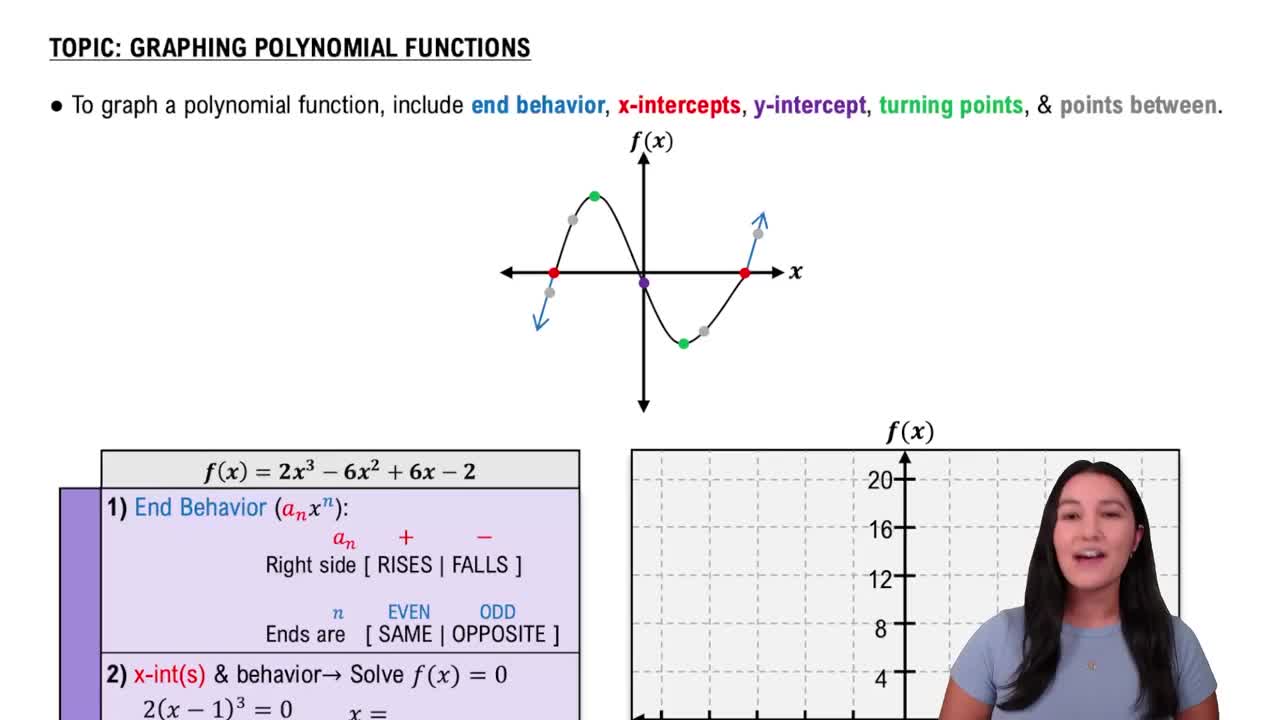Here are the essential concepts you must grasp in order to answer the question correctly.
Roots of a Polynomial
The roots of a polynomial are the values of x for which the polynomial equals zero. In the equation 7x(x - 1)(x - 2) = 0, the roots can be found by setting each factor to zero, resulting in x = 0, x = 1, and x = 2. These roots correspond to the x-intercepts of the graph, where the curve crosses the x-axis.
Recommended video:
Imaginary Roots with the Square Root Property
Interval Notation
Interval notation is a mathematical notation used to represent a range of values. It uses parentheses and brackets to indicate whether endpoints are included (closed interval) or excluded (open interval). For example, the interval [0, 2] includes both endpoints, while (0, 2) does not. This notation is essential for expressing solutions to inequalities derived from polynomial equations.
Recommended video:
Graphing Polynomial Functions
Graphing polynomial functions involves plotting points based on the function's values and identifying key features such as roots, turning points, and end behavior. The graph of the polynomial 7x(x - 1)(x - 2) will show the roots at x = 0, x = 1, and x = 2, and the behavior of the graph in the intervals between and beyond these roots is crucial for solving inequalities and understanding the function's overall shape.
Recommended video:
Graphing Polynomial Functions

 Verified step by step guidance
Verified step by step guidance Verified video answer for a similar problem:
Verified video answer for a similar problem:

